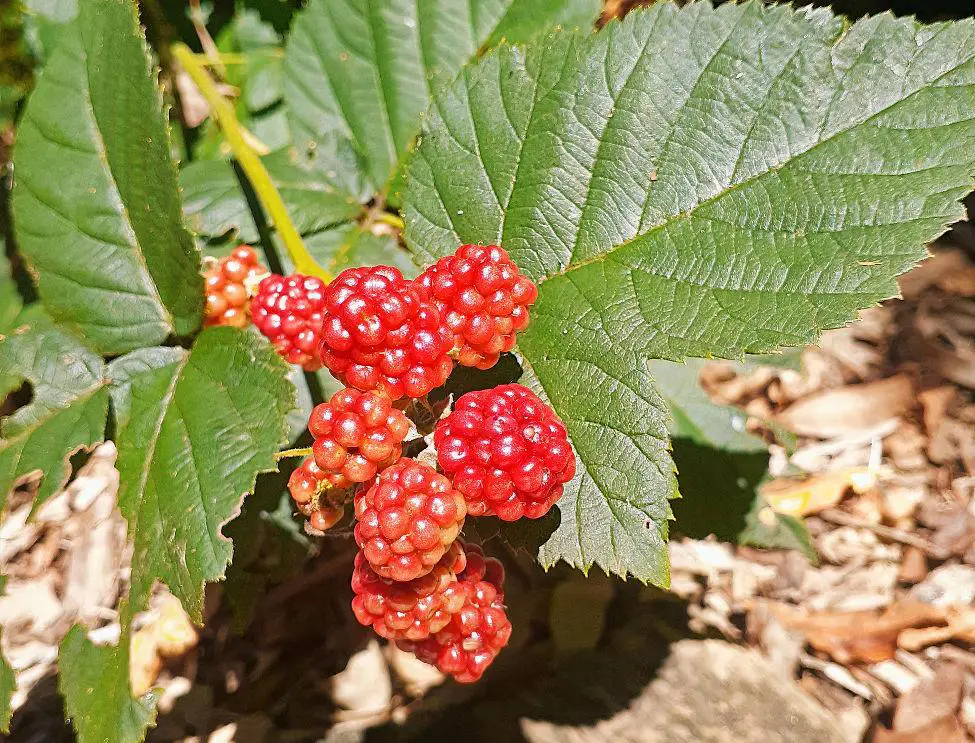Boysenberries are delightful and versatile fruits, but like any plant, they can face various issues that may hinder their growth and productivity. Don’t worry, though! In this guide, we’ll explore some common boysenberry problems and provide friendly troubleshooting tips to help your boysenberry plants thrive and bear delicious fruits.
Drooping or Wilting Leaves
If you notice your boysenberry leaves drooping or wilting, it could be a sign of overwatering or underwatering. Check the soil moisture by sticking your finger about an inch deep into the soil. If it feels dry, it’s time to water. If it’s consistently wet, reduce your watering frequency. Additionally, make sure your boysenberry plant is in well-draining soil, as waterlogged roots can lead to various issues.
Pests Invading Your Boysenberries
Pesky insects can wreak havoc on your boysenberry plants, causing damage to both leaves and fruits. To fend off these invaders, try using natural pest control methods like introducing ladybugs or praying mantises to your garden. If that’s not sufficient, consider using organic insecticides specifically designed for edible plants, making sure to follow the instructions carefully to avoid any harm to beneficial insects.
Poor Fruit Production
Even though Boysenberry plants are very drought-tolerant, lack of moisture during the fruiting season can lead to poor fruit production. It might also result in smaller fruit that won’t ripe properly. Make sure you water your plants, especially during their budding and growth periods.
Yellowing Leaves
Yellow leaves can indicate nutrient deficiencies in your boysenberry plants. The most common culprits are nitrogen, iron, and magnesium deficiencies. Treat the soil with a balanced fertilizer to provide a boost of essential nutrients. If you prefer organic solutions, consider using compost or well-rotted manure to enrich the soil gradually. Remember, it’s crucial to follow the application instructions and avoid over-fertilizing, as it can lead to other problems.
Cane and leaf rust is a fungal disease that can also lead to yellow spots developing on leaves. If you see signs of this, simply prune out the diseased canes.
Pruning Mishaps
Pruning is essential for maintaining the health and shape of your boysenberry plants. However, improper pruning can lead to reduced fruit production or even damage to the plant. Make sure to prune during the appropriate time, usually in late winter or early spring, before new growth begins. Remove dead, diseased, or weak canes, and thin out overcrowded growth to allow better air circulation. Always use sharp, clean tools and make clean cuts to avoid unnecessary harm to the plant.
Powdery Mildew on Leaves
Powdery mildew is a common fungal disease that affects boysenberry leaves. It appears as a white, powdery substance on the leaves surface and can hinder photosynthesis and stunt plant growth. To combat powdery mildew, ensure adequate spacing between plants to promote air circulation. Apply fungicides as a preventive measure during the early stages of the disease. Also, avoid overhead watering, as moist conditions encourage fungal growth.
Lack of Support for Climbing Varieties
Boysenberries are climbing plants and require support to grow properly. If your boysenberry plants are sprawling on the ground or getting tangled, it’s time to set up a trellis or support structure. This not only helps with their growth but also makes harvesting easier. Ensure the trellis is sturdy enough to withstand the weight of the mature plant and the abundant fruit it will produce.
With these troubleshooting tips in hand, you can address common boysenberry problems effectively and enjoy a bountiful harvest of delicious and juicy boysenberries. Gardening can be an adventure, and learning to tackle challenges can be immensely rewarding as you watch your boysenberry plants flourish and thrive.
